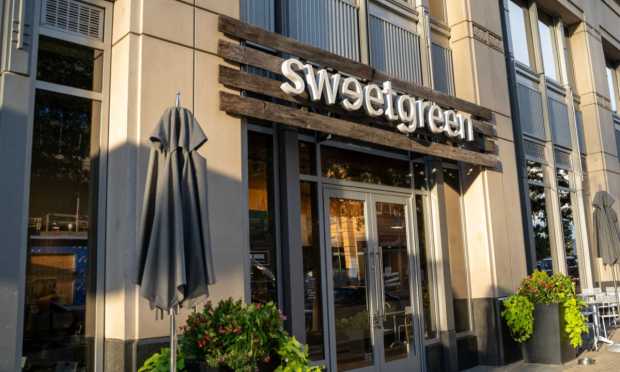Automation Taking Over the Restaurant Industry Despite Consumer Pushback

This week in restaurant news, Sweetgreen taps robotics, drive-thru chains get automated, and social commerce starts to take hold in digital ordering.
Fast-casual chain Sweetgreen is planning to integrate automation into almost all of its restaurants within the next five years, according to CEO Jonathan Neman’s comments at William Blair’s 43rd Annual Growth Stock Conference.
Meeting highlights from William Blair observe that Sweetgreen’s first test of an automated store has indicated that the technology works, increasing throughput, maintaining more consistent portions, boosting accuracy, and lowering the brand’s labor needs. The investment firm noted that the technology could have “the potential to structurally change sweetgreen’s labor model,” given that currently around half of the company’s variable labor is pegged to the assembly line.
“In five years, we do expect all Sweetgreen stores to be automated,” Neman reportedly said at the conference, according to Restaurant Business. “We think all stores at some point will make the switchover.”
Yet, from consumers’ perspective, more automation is not always a good thing. Sweetgreen’s first automated location replaces its typical servers with a “host” and with self-service kiosks. Yet, diners are growing frustrated with the increasing automation of the restaurant experience. More on that below.
Findings from PYMNTS’ study last year, “Digital Divide: Technology, The Metaverse And The Future Of Dining Out,” which drew from a survey of nearly 2,500 U.S. consumers, revealed that more than three-quarters (77%) of restaurant consumers say staff friendliness is the most important feature a restaurant needs to provide. The same study found that 63% of diners believe restaurants are becoming increasingly understaffed, and 39% said that they are becoming less and less personal.
ChatGPT Makes Its Way into Restaurant Reservation Process
Restaurant marketing platform Milagro, which works with brands including LongHorn Steakhouse, Jimmy John’s and Blaze Pizza, announced Friday (June 9) that it is integrating OpenAI’s ChatGPT into its platform for restaurateurs to get information about key metrics.
“The incredible thing about AI is that it is always learning — 24/7 — as we continue to train it new categories and add data, it gets better at correlating data,” Milagro CEO Hamed Mazrouei said in a statement. “We are truly seeing the realization of a business owner’s dreams, the integration and capabilities of AI happening much sooner than we expected. In the next 12 months, the entire restaurant industry will change as we know it.”
The news comes as restaurants across the industry look to automated technology to simplify complex tasks and save on labor. Data cited in “Inflation Makes Technology Table Stakes for Restaurants,” the March edition PYMNTS’ “Money Mobility Tracker®,” created in collaboration with Ingo Money, reveal that three-quarters of restaurant operators plan to adopt technology this year to address their labor and cost challenges. Additionally, 90% of restaurant owners report that they see increased back-of-house automation as a key way to free up time to focus on more important tasks.
Social Commerce Beginning to Take Hold in the Restaurant Industry
As restaurants look for new ways to reach consumers in the course of their day-to-day lives, some are turning to social media to create new opportunities to drive conversion.
Restaurant technology company Waitbusters, for instance, announced Thursday (June 8) that it is making it possible for its restaurants to accept orders via Facebook. The move comes as young consumers turn to social media platforms as restaurant discovery tools.
Additionally, this integration seizes on key trends in Americans’ digital habits, which skew towards social media. PYMNTS’ study “How the World Does Digital: Different Paths To Digital Transformation,” which drew from a survey of more than 30,000 consumers in 11 countries, found that, passively scrolling social media is the second-most common daily digital activity in the U.S., behind only video streaming.
Indeed, Meta is looking to capitalize on the rise of new opportunities to drive sales. Last summer, the tech giant invested in Take App, a Singapore startup that offers conversational commerce solutions for restaurants and other businesses selling via Meta-owned messaging service WhatsApp.
Plus, the majority of consumers order online at least some of the time. Research from PYMNTS’ recent study “12 Months Of The ConnectedEconomy™: 33,000 Consumers On Digital’s Role In Their Everyday Lives,” which drew from responses from tens of thousands of U.S. consumers, noted that, as of November, 57% of consumers reported placing restaurant orders digitally.

